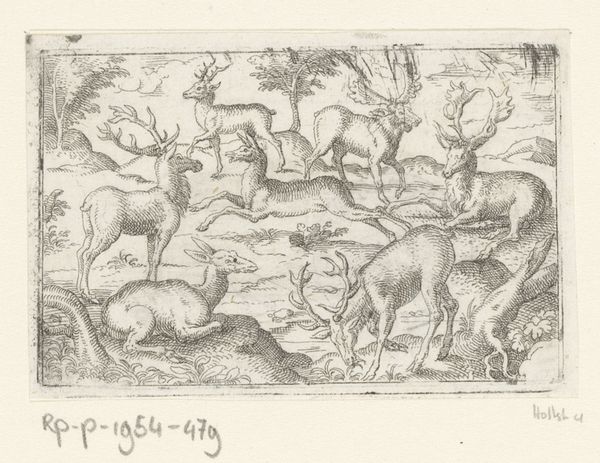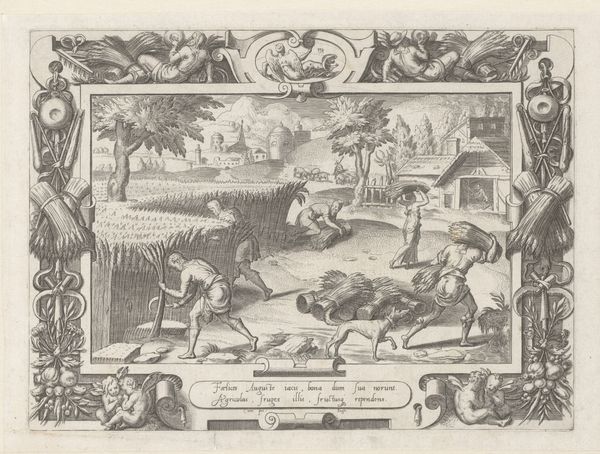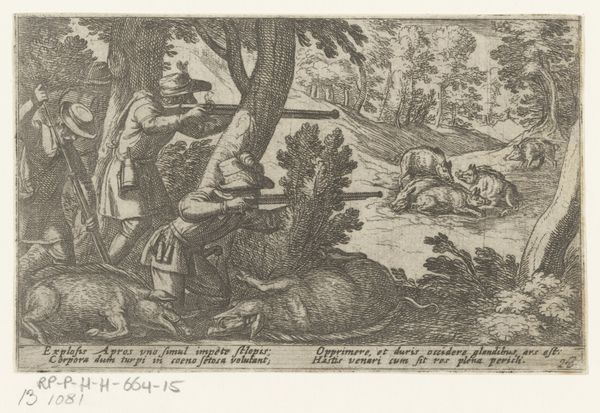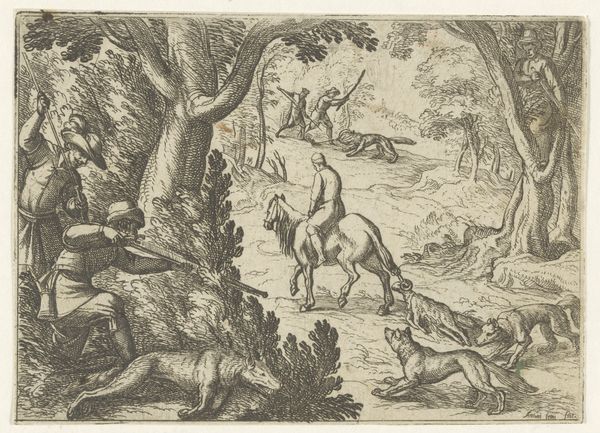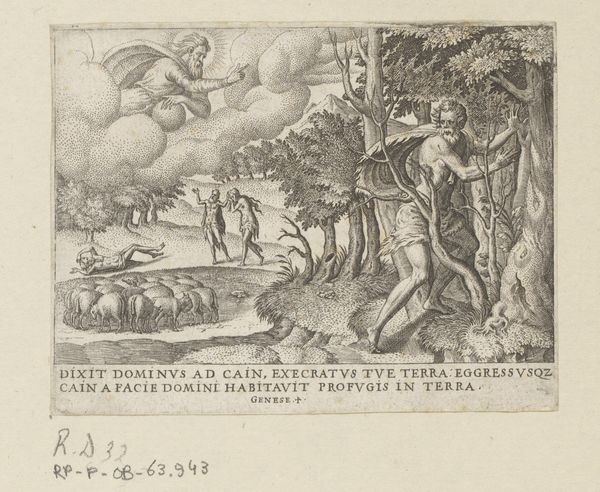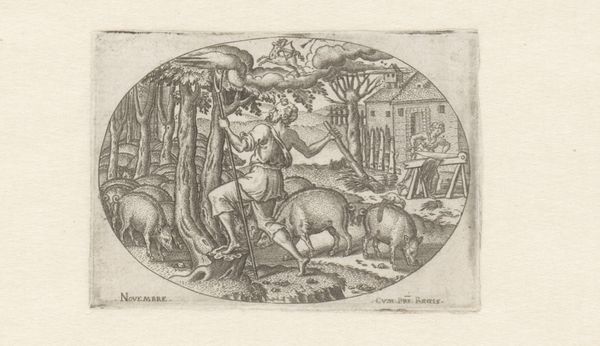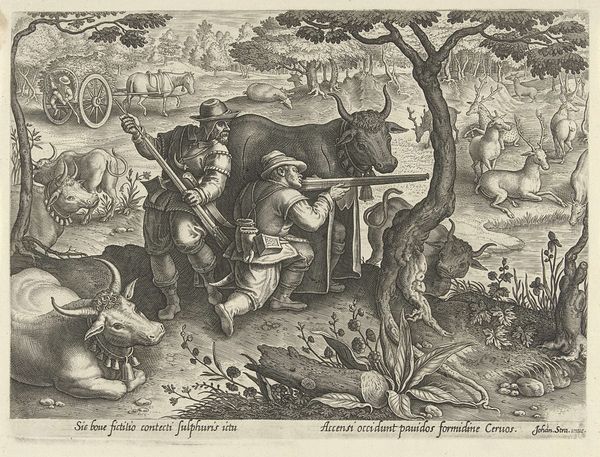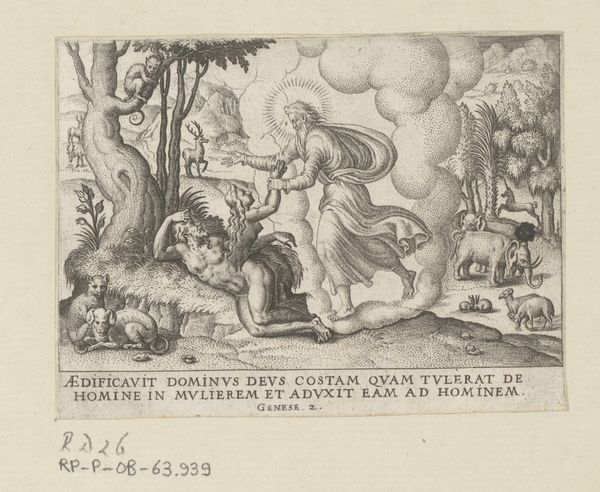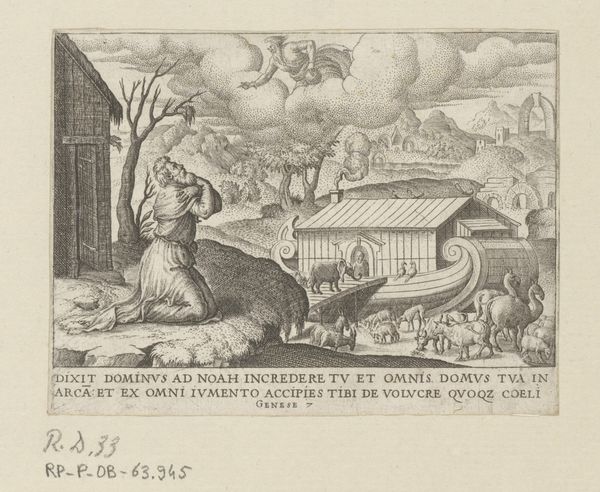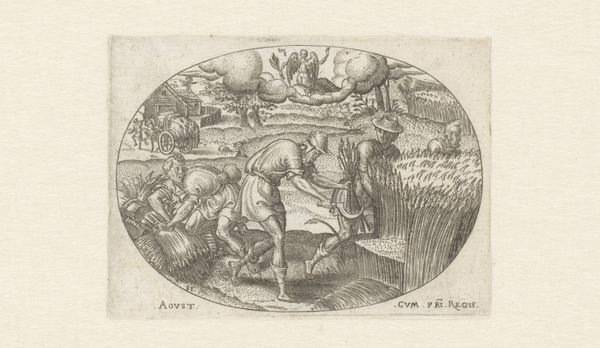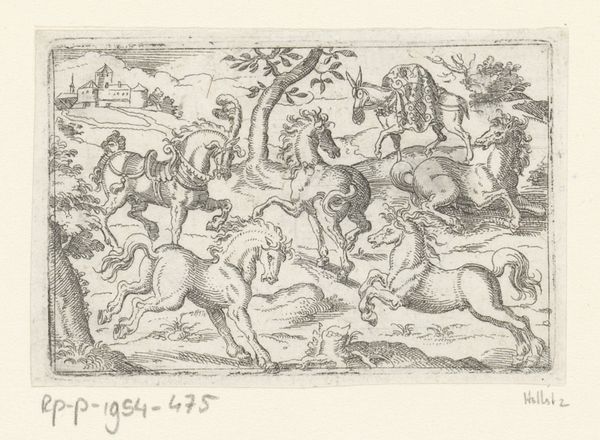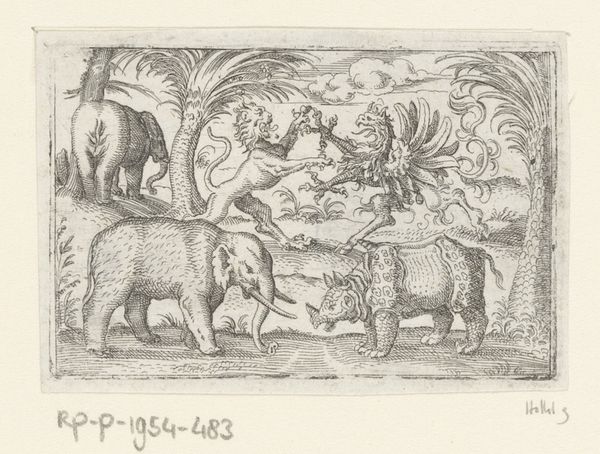
Dimensions: height 76 mm, width 104 mm
Copyright: Rijks Museum: Open Domain
Curator: Here we have a print from after 1569 by Étienne Delaune, titled “Kaïn Doodt Abel,” currently held at the Rijksmuseum. Editor: The scene is heavy, emotionally dense. The sharp lines of the engraving emphasize the violence, but there’s also a curious distance – almost as if it’s happening on a stage, not in the real world. Curator: That stage, that distance, is deliberate. Consider the landscape setting: seemingly pastoral but containing a horrific act. The image is divided: to the left, Cain murdering Abel, and to the right, sacrificial offerings – Abel's accepted, Cain's rejected. Notice how Delaune contrasts calm fields with this stark moment. The engraving is not simply about showing us a murder, but encoding theological meaning and judgement within each symbolic component. Editor: Yes, and let's remember the wider context of violence, often fraternal violence, used as political propaganda. This image isn't just about some primordial transgression; it reflects contemporary social anxieties, about order and who wields power. Look at Cain's pose, almost theatrical, a dramatic, operatic display of aggression. Is this trying to invoke empathy or disgust? What assumptions about masculinity and fratricide does it rely on? Curator: I see in Cain a depiction of internal turmoil, a visible manifestation of inner spiritual battle. Think about how, in early interpretations, Abel represents divine favour, a closeness to God that Cain, perhaps, felt he lacked. Cain’s mark later is also a fascinating and enduring symbol of God's complex mercy. Editor: Exactly, it speaks volumes about divine power, societal expectations, and maybe even about justifying the actions of those in authority. Who is authorized to pass judgement and punish? In an era rife with conflicts—religious or otherwise—visual narratives wield considerable power and can become effective tools for manipulating belief systems. Curator: And that’s why an understanding of symbolic imagery matters! Looking closely, we realize Delaune does more than retell a bible story: He has given us enduring material for thought. Editor: He forces us to look back to question our present, using history, emotion, and fear to question how those power dynamics are still at play in the modern world.
Comments
No comments
Be the first to comment and join the conversation on the ultimate creative platform.
